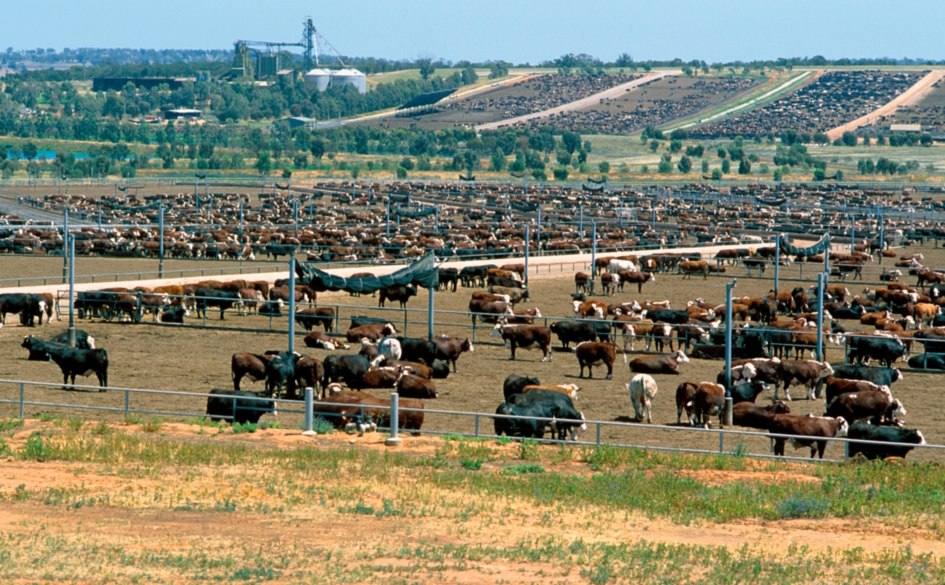Elevate Your Farming Game with Constance Cattle: Ideal Practices and Profitability Tips
Wiki Article
Master the Art of Food Preparation With Lawn Fed Meat
In the realm of culinary proficiency, mastering the art of food preparation with grass-fed meat holds a prominent placement. From the tender structure to the durable flavor profile, grass-fed meat provides a canvas for culinary creative thinking.Benefits of Grass-Fed Meat

When choosing grass-fed meat, customers can gain from its higher levels of omega-3 fats and anti-oxidants compared to conventionally raised meat. Constance Cattle. Omega-3 fatty acids are necessary nutrients that sustain brain health and wellness, decrease swelling, and promote heart health and wellness. Grass-fed meat is understood to have up to 5 times much more omega-3 fats than grain-fed meat, making it a healthier option for those aiming to increase their consumption of these beneficial fats
Along with omega-3 fatty acids, grass-fed meat is additionally richer in anti-oxidants such as vitamins E and C, along with beta-carotene. Anti-oxidants play a critical function in safeguarding cells from damages created by cost-free radicals, which can add to various persistent diseases and accelerate aging. By selecting grass-fed meat, consumers can not just enjoy an extra tasty and nutrient-dense healthy protein source however additionally support their general health and wellness and health.
Integrating grass-fed meat right into your diet can be a straightforward yet efficient means to boost your dietary consumption and gain the advantages of omega-3 fats and antioxidants that are naturally abundant in this sort of meat.
Ideal Cooking Approaches
Utilizing appropriate cooking techniques is vital to protect the nutrient profile and improve the flavor of grass-fed meat. When cooking grass-fed meat, it is very important to remember that it is leaner than conventionally raised meat, making it much more susceptible to drying out if overcooked. To ensure a juicy and savory outcome, take into consideration cooking grass-fed meat at somewhat lower temperature levels than you would with grain-fed meat.
Grilling is a preferred method for food preparation grass-fed meat as it allows excess fat to leak away, avoiding flare-ups that can create charring. When grilling grass-fed meat, usage medium warm and maintain a close eye on it to avoid overcooking. An additional excellent food preparation method for grass-fed meat is pan-searing. This technique aids seal in the juices and produce a scrumptious crust on the meat.
Slow cooking methods such as braising or cooking are additionally outstanding choices for harder cuts of grass-fed meat, as they assist damage down the muscular tissue fibers and tenderize the meat. Whichever cooking method you choose, keep in mind to allow grass-fed meat remainder after preparing to permit the juices to rearrange, making certain a moist and tender final dish.
Flavor Pairings and Seasonings
To enhance the natural flavors of grass-fed meat, strategic flavor pairings and seasonings play an important function in raising the general dining experience. Grass-fed meat has a rich, unique taste that can be complemented and enhanced by carefully chosen ingredients. When it comes to flavor pairings, natural herbs like thyme, rosemary, and oregano work extremely well with grass-fed beef, lamb, or bison. These herbs include deepness and earthiness to the meat, boosting its natural flavors without subduing them.Along with herbs, seasonings such as black pepper, garlic, and smoked paprika can additionally raise the preference profile of grass-fed meat recipes. These seasonings offer a balance of warmth, sweetness, and smokiness that can boost the general dining experience. When flavoring grass-fed meat, it is vital to use top quality salt, like sea salt or Himalayan salt, to highlight the meat's flavors without including unnecessary chemicals or additives.
Storage Space and Handling Tips
Correct storage and taking care of practices are crucial for preserving the quality and quality of grass-fed meat. When storing grass-fed meat, it is vital to keep it cooled at temperatures below 40 ° F(4 ° C) to avoid bacterial top article development and spoilage. To expand the meat's life span, take into consideration wrapping it snugly in parchment paper or butcher paper before positioning it in a closed container or sealed plastic bag - Constance Cattle. Stay clear of storing grass-fed meat near strong-smelling foods as it can take in smells conveniently.When dealing with grass-fed meat, it is essential to practice excellent hygiene to avoid cross-contamination. Clean your hands extensively before and after dealing with the meat, and make certain that all tools and surfaces that enter contact with the meat are cleaned up and disinfected effectively. Additionally, use separate cutting boards for meat and veggies to prevent microbial transfer.

Leading Grass-Fed Meat Recipes
When thinking about the ideal ways to appreciate the quality and quality of grass-fed meat, discovering first-class dishes can elevate your culinary experience. Grass-fed meat's abundant taste and leaner profile provide themselves well to a selection of dishes that highlight the natural benefits of the meat. One leading recipe to try is a traditional Grilled Grass-Fed Ribeye Steak skilled article with easy components like salt, pepper, and a touch of garlic for a durable flavor. For a soothing dish, a Slow Cooked Grass-Fed Beef Stew with root vegetables and aromatic natural herbs is a hearty option that brings out the meat's tenderness.If you're in the mood for something lighter, a Grilled Grass-Fed Burger served with fresh garnishes and a side of pleasant potato french fries is a scrumptious choice. Additionally, a Herb-Crusted Grass-Fed Lamb ribs roasted to perfection with a medley of herbs and breadcrumbs is a show-stopping dish for unique celebrations. These leading grass-fed meat dishes showcase the flexibility and premium high quality of grass-fed meat, allowing you to appreciate its remarkable taste in numerous culinary creations.

Conclusion
Finally, understanding the art of food preparation with grass-fed meat provides countless benefits, consisting of improved nutritional value and exceptional flavor. By utilizing the very best food preparation approaches, try out flavor pairings and spices, and adhering to appropriate storage and handling pointers, you can create tasty and healthy meals. Experiment with some top grass-fed meat recipes to raise your culinary skills and enjoy the full capacity of this high-grade ingredient.When cooking grass-fed meat, it is essential to keep in mind that it is leaner than conventionally elevated meat, making it more susceptible to drying out if overcooked. To make sure a juicy and flavorful end result, take into Continue consideration cooking grass-fed meat at somewhat reduced temperatures than you would with grain-fed meat.
When flavoring grass-fed meat, it is necessary to utilize high-quality salt, like sea salt or Himalayan salt, to bring out the meat's flavors without adding unnecessary chemicals or additives.
Grass-fed meat's abundant flavor and leaner account offer themselves well to a range of recipes that highlight the natural benefits of the meat. These top grass-fed meat dishes showcase the adaptability and superior top quality of grass-fed meat, enabling you to enjoy its premium taste in numerous culinary productions.
Report this wiki page